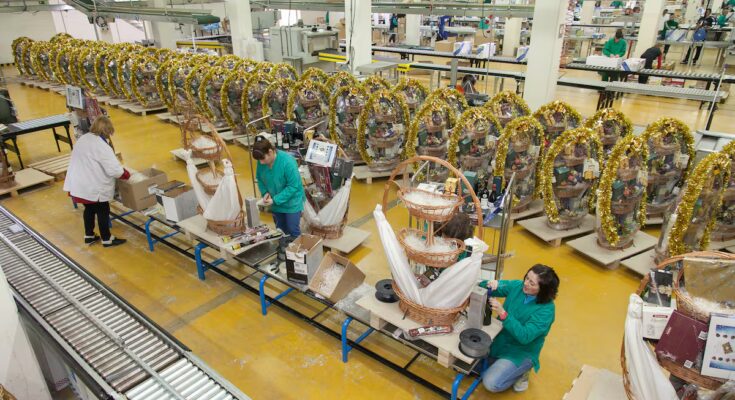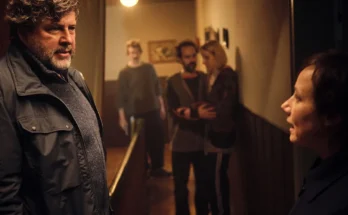Ruth Chamorro was very excited when “very young” she received her first Christmas hamper. But once the first few moments passed, he ran into a problem. How to take the package from your company headquarters to your home using the subway, your usual means of transport. The solution was to call a taxi “assuming an out-of-budget expense”. The commercial director of the incentives unit of Up Spain, a flexible remuneration company, laughingly recalls this personal anecdote on the other end of the phone to explain how companies’ Christmas gifts are changing to try to adapt “to the five generations that can coincide in the work environment”. “There are different types of employees, different not only in age, but also in tastes, type of diet or personal situation”.
Chamorro maintains that with the traditional Christmas basket, companies make an effort, despite which the employee may not feel listened to, or think that his company does not know him. “That gift that in the past made ‘wow’, today no longer meets all needs. And there is an ever-increasing tendency to replace the tangible with the experiential. One person may like sausage, but another may prefer to go to see a show. Our proposal is to allow choice, not impose the gift.”
Up Spain, which serves around 4,700 companies and more than 100,000 employees in Spain, offers its customers online gift catalogues. “The products are displayed in an environment personalized with the company’s image and values, and workers have a series of points that they can exchange for what best suits their needs. Whether it be objects, such as technological devices or toys for their children, experiences, such as tickets to musicals, or gourmet products.”
Last year, the flagship product on its platform was air fryers. “We have run out of stock,” reveals Chamorro, who underlines that the most requested are technological products, from wireless headphones to mobile phones, in the case of companies with a larger budget.
“We’ve noticed a very strong trend with experiences. Tangible things are forgotten, but when you go, for example, to a musical you remember it more and share it with those around you. And this also creates a greater connection with the company,” he says.
The company can also take care of logistics, “taking the headache out of human resources departments” and deliver gifts to employees’ homes. An ease that Chamorro would have appreciated on the first basket. Recalling the emotion of receiving it, he admits that despite the growth of options such as those offered by his company, the traditional Christmas hamper continues to be a very popular gift among companies.
More sliced hams, fewer whole hams
Although the sector has seen better times, as recognized by Ricardo Quintano, general director of Alonso Navidad, a company specialized in the preparation of this type of gifts. “Starting in 2007 and with the crisis, it started to decline very powerfully, it hit rock bottom and we remain there. There is no downward trend, but there is no upward trend either.” Furthermore, every year we have to deal with the price increases of the different products that make up the lot. When it is not one, for example oil, it is another, more recently cocoa. “This forces us to be imaginative and make changes to fit clients’ budgets.” In the baskets there is usually no shortage of cheeses and cured meats. “60% of the total purchases we make at Christmas correspond to cured meats. This year is critical for Iberian products because the price has increased a lot and there is a shortage of hams and shoulders for reasons of supply and demand.” A lack of Iberians that had already been noticed in recent years, explains Quintano. The Lotes de España company also “regrets” the increase “in the cost of ham, chocolate and nuts,” reads a press release issued by the company.
The ham is a really good example of how Christmas hampers have evolved to adapt to the new realities of employees. “Sliced meats are becoming more and more popular. On the one hand, for economic reasons. A whole piece is not the same as a sliced kilo, which costs less. And on the other hand, families are smaller and one ham at home is too much for them. Furthermore, the habit of cutting ham is being lost. Bags are easier to consume,” says Quintano. Not to mention that in small homes it can be an odyssey to find enough space in the kitchen to place the ham holder.
Another change that Quintano highlights is the decrease in high-alcohol drinks, such as whiskey, rum or cognac, a trend in line with young people drinking less than previous generations. “The cava and wines are maintained.”
Vegans and celiacs
The baskets have also been adapted to the food options of an increasingly large population. This is the case of batches of vegan or gluten-free products, as underlined by Victoria González, director of promotional marketing and fair trade at the Juan XXIII Foundation. This non-profit entity produces, from the department led by González, more than 120,000 baskets each year. “We see that a more gourmet approach is now being sought, where quality prevails over quantity. With local products, more careful presentations and made with recyclable materials.” Regarding this last point, Lotes de España underlines that “wicker baskets are a classic”, but that “they have also placed other formats such as trunks, ice buckets, portable refrigerators, backpacks or suitcases with wheels”.
The Juan XXIII Foundation also offers its customers a platform where employees can choose their own gift. Whether it’s personalizing your basket, opting for other gifts, “among which technological ones triumph”, or choosing an experience. Furthermore, there are those who decide to make donations to non-profit organization projects using this tool. Among all the options, “there is a high percentage who still want a basket, in its different varieties. That moment of arriving home with the box and being able to open it with the family. Or for it to be the product consumed on Christmas Eve or Christmas”. “I think it’s something that will continue to exist because it’s the magic of basketball,” González says.
A statement that coincides with that of Ricardo Quintano, for whom “the perception of the value received when a gift voucher is given is lower”. “That romanticism, we could call it, of receiving the basket and opening it within the family still persists. You get into the Christmas spirit,” he defends. Whether it is a batch of food products, a technological object or an experience, all the sources consulted agree that beyond the material value, there is an unquantifiable part. That feeling of recognition for their work and dedication that the employee feels when they receive a gift of this type.



